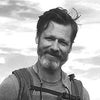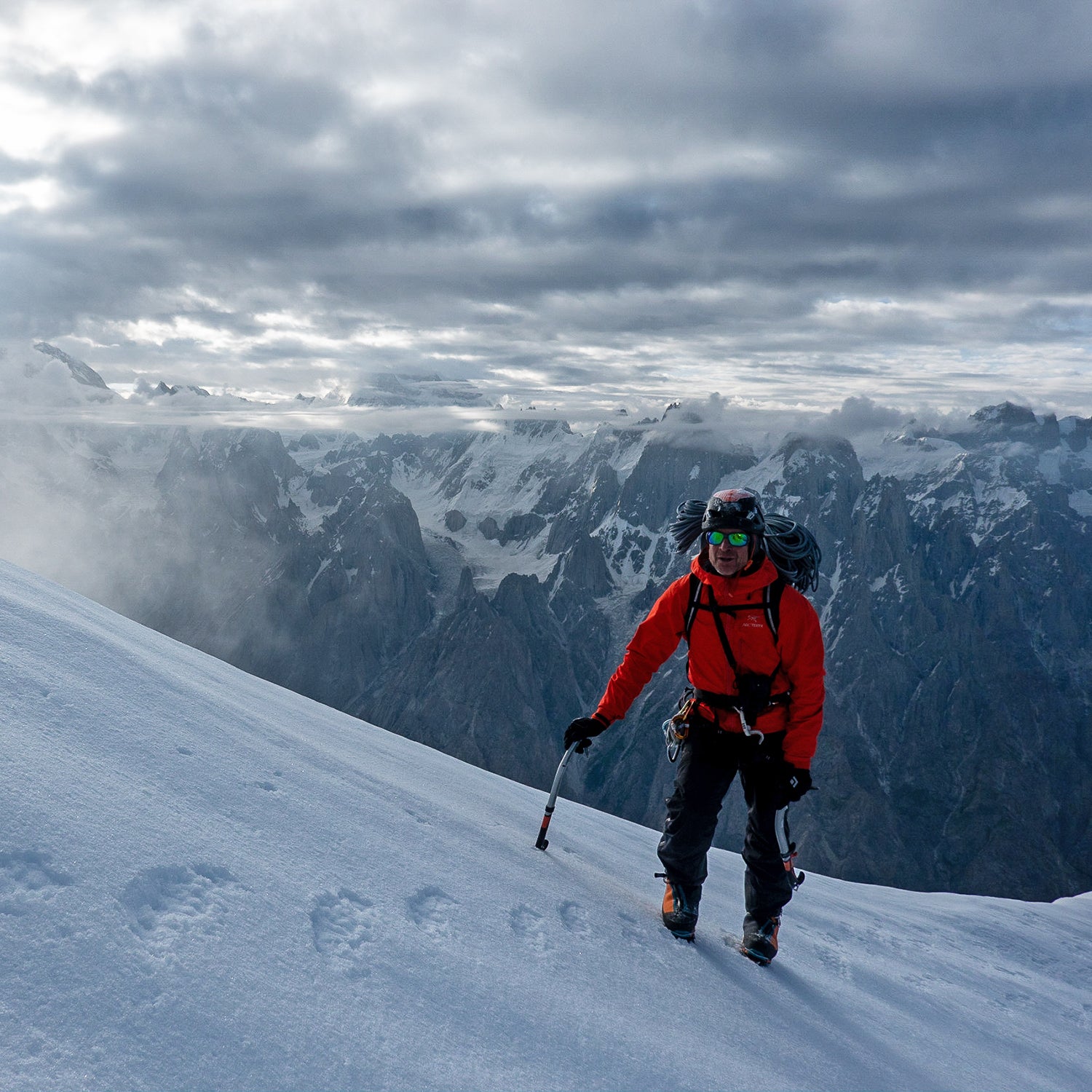Steve Swenson admits he went overboard with his base-camp dinner in August on the side of Link Sar, an icy peak in Pakistan’s Karakoram Range. Indulging in chicken tikka, tuna salad, fried potatoes, and chapati bread,��spirits were high because the 65-year-old and his climbing��partners, Graham Zimmerman, Chris Wright, and Mark Richey, had just bagged the first ascent of one of the last unclimbed 7,000-meter peaks in the world. When you have the rare opportunity to stand where no person has stood before, you’re allowed some extra potatoes with dinner. Also, he was hungry.��
“We spent nine days climbing, only eating 2,000 calories a day, because that’s all of the food we could carry,” Swenson says. “It felt good to sit around, eat a big meal, and talk about what we’d just accomplished.”��
Sitting in a buffer zone between Pakistan and India, 23,100-foot��Link Sar is typically closed to foreigners by the Pakistani government for security reasons,��although there have been��eight serious summit attempts during brief windows of access.��Swenson himself��failed to summit the mountain twice before, and��he almost suffered the same��fate during this most recent push: Zimmerman��fractured a slab of ice while leading a pitch, and he tumbled��down the slope and over a cliff, falling��100 feet before his��rope caught him. The group��was just 300 feet from the summit and almost had to turn around.��Luckily, nobody was injured, and they were��able to reach the top.��
For Swenson,��Link Sar is an incredible accomplishment to cap off��an astonishing climbing career. The retired engineer spent more than 50 years scaling��rock and ice and managing expeditions to the biggest mountains in the world. He climbed the remote northern side of K2 without oxygen in 1990 with a small team, then he summited��Mount Everest solo without oxygen in 1994. In 1997, he earned a lifetime achievement award from the American Alpine Club, and in 2012, he was awarded the coveted Piolet d’Or for an ultralight ascent of Saser Kangri��II, a 24,665-foot peak in northwest India, with Richey and Freddie Wilkinson.��His 2017 memoir,��, details his adventures��in the rugged Karakoram Range, one of the world’s most inhospitable environments.��
“At this point in my life, it’s not about standing on a particular point on the planet,” Swenson says. “It’s about the partnerships and work that it took to get there. The experience and work are actually more rewarding than standing on top of the mountain.”��
And standing on��top of Link Sar took a lot of work, including navigating the logistical juggernaut of securing a permit. Safely climbing the southeast face of Link Sar, which Swenson chose based on reconnaissance work done on three different expeditions spread across two decades, also requires extreme physical prowess. The��circuitous path is��the��easiest and quickest way to access the peak from the Kaberi Glacier in the valley, but it’s��no tourist romp. “Link Sar is an extremely complex and difficult mountain, full of ice cliffs that can break off in an instant,” Swenson says. “There are a lot of dead ends on that mountain. The conditions we ran into took all the skill and thought that our experienced group of four had.”��
“The experience and work are actually more rewarding than standing on top of the mountain.”
Swenson splits his��time between��Seattle and Canmore, Canada, climbing rock in the summer and ice in the winter. He says he’ll typically enjoy 50 days of ice climbing in Canada during the winter, where most of his climbing partners are 30 to 40 years younger. This tends to happen when you’re the only retiree at the crag.��
To prepare for Link Sar, Swenson ice-climbed��and nordic-skied in the Canadian Rockies six days a week, adding in weight lifting over the last year. In the spring and��summer, he trained two to four hours a day, six days a week, running daily and carrying 60 pounds of water up a 4,000-foot peak near his home in Seattle twice��a week. “All the research has shown that 80 percent of training for alpine ascents needs to be long duration and low intensity, to build a huge foundation of endurance,” Swenson says. “There are no shortcuts to this. There’s no thirty-minute-a-day��gym workout. You have to have the discipline to put the time in.”��
Maintaining a high level of fitness has always been a key element to Swenson’s success in the alpine world, and it’s a��philosophy many of his current��climbing partners share.��“The athleticism we see now with climbers is so far beyond what it was 40 years ago, it’s mind-boggling,” Swenson says. “People have so much more information about how to train now, and I’ve picked up that information as time has gone by. As an older climber, when I go out and train on any particular day, my big goal is to not get injured. In my twenties��and thirties, I would push through a tight muscle��or minor pain, but now I just stop. It’s not worth it. The most important thing is to be able to come back tomorrow.”
Swenson laments the common scenario for many older people, who often work��too much, exercise��too little, and find��themselves unhealthy during their golden years.��“Imagine spending all your years looking forward to retirement��and you can’t enjoy it,” Swenson says. After completing Link Sar, he started compiling a list of all the unclimbed��7,000-meter peaks in the world. He estimates there are maybe 20, most of which don’t interest him this late in the game. It takes several years of planning to put together an ascent like Link Sar. But there are hundreds of unclimbed 6,000-meter peaks, especially in a place like the Karakoram Range, surrounding Link Sar, where vast areas are just beginning to open up to climbers. Swenson gets excited about the potential.��
“You have valleys the size of the French Alps, and nothing has been climbed,” Swenson says. “Imagine going into an area like that, where you get to pick and choose the most beautiful routes to climb. Putting together those sorts of projects is inspiring. I want to be able to maintain this level of climbing for as long as I can. I pinch myself every day. How did my life get to be so good? It’s amazing.”


